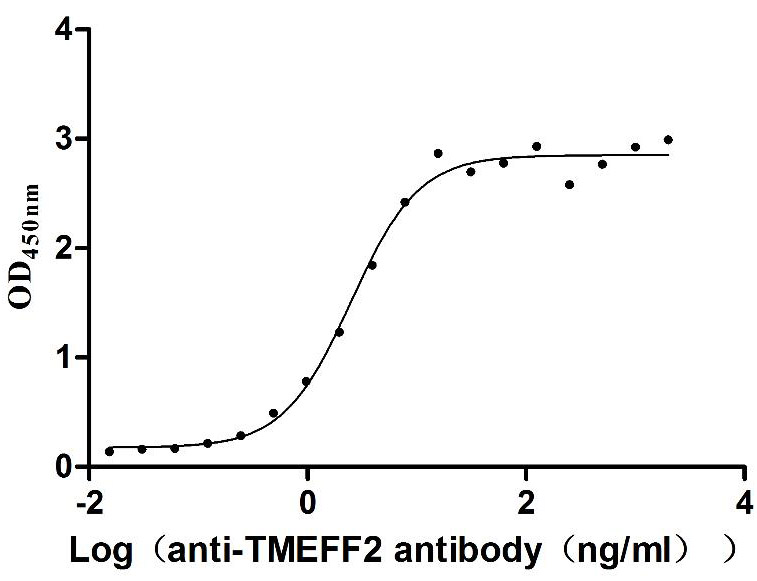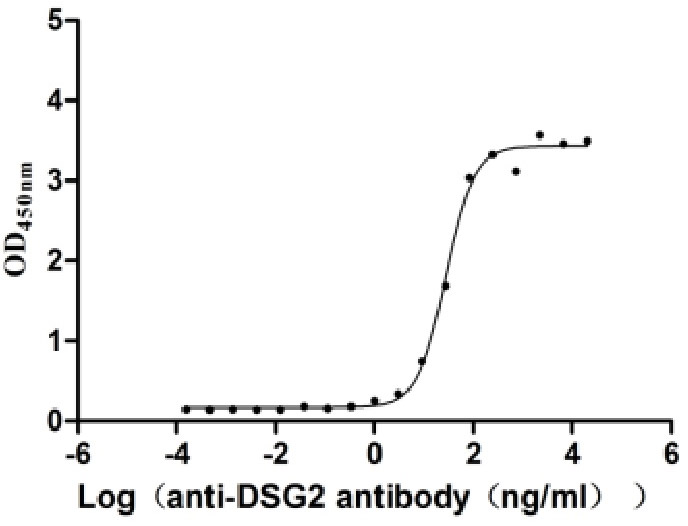Recombinant Human Collagen alpha-1(VII) chain (COL7A1)
-
中文名稱:
-
貨號:CSB-YP733975HU
-
規(guī)格:
-
來源:Yeast
-
其他:
-
中文名稱:
-
貨號:CSB-EP733975HU
-
規(guī)格:
-
來源:E.coli
-
其他:
-
中文名稱:
-
貨號:CSB-EP733975HU-B
-
規(guī)格:
-
來源:E.coli
-
共軛:Avi-tag Biotinylated
E. coli biotin ligase (BirA) is highly specific in covalently attaching biotin to the 15 amino acid AviTag peptide. This recombinant protein was biotinylated in vivo by AviTag-BirA technology, which method is BriA catalyzes amide linkage between the biotin and the specific lysine of the AviTag.
-
其他:
-
中文名稱:
-
貨號:CSB-BP733975HU
-
規(guī)格:
-
來源:Baculovirus
-
其他:
-
中文名稱:
-
貨號:CSB-MP733975HU
-
規(guī)格:
-
來源:Mammalian cell
-
其他:
產(chǎn)品詳情
-
純度:>85% (SDS-PAGE)
-
基因名:CO7A1
-
Uniprot No.:
-
別名:Collagen alpha-1(VII; chain; Long-chain collagen; LC collagen; COL7A1
-
種屬:Homo sapiens (Human)
-
蛋白標簽:Tag?type?will?be?determined?during?the?manufacturing?process.
The tag type will be determined during production process. If you have specified tag type, please tell us and we will develop the specified tag preferentially. -
產(chǎn)品提供形式:Liquid or Lyophilized powder
Note: We will preferentially ship the format that we have in stock, however, if you have any special requirement for the format, please remark your requirement when placing the order, we will prepare according to your demand. -
復(fù)溶:We recommend that this vial be briefly centrifuged prior to opening to bring the contents to the bottom. Please reconstitute protein in deionized sterile water to a concentration of 0.1-1.0 mg/mL.We recommend to add 5-50% of glycerol (final concentration) and aliquot for long-term storage at -20℃/-80℃. Our default final concentration of glycerol is 50%. Customers could use it as reference.
-
儲存條件:Store at -20°C/-80°C upon receipt, aliquoting is necessary for mutiple use. Avoid repeated freeze-thaw cycles.
-
保質(zhì)期:The shelf life is related to many factors, storage state, buffer ingredients, storage temperature and the stability of the protein itself.
Generally, the shelf life of liquid form is 6 months at -20°C/-80°C. The shelf life of lyophilized form is 12 months at -20°C/-80°C. -
貨期:Delivery time may differ from different purchasing way or location, please kindly consult your local distributors for specific delivery time.Note: All of our proteins are default shipped with normal blue ice packs, if you request to ship with dry ice, please communicate with us in advance and extra fees will be charged.
-
注意事項:Repeated freezing and thawing is not recommended. Store working aliquots at 4°C for up to one week.
-
Datasheet :Please contact us to get it.
相關(guān)產(chǎn)品
靶點詳情
-
功能:Stratified squamous epithelial basement membrane protein that forms anchoring fibrils which may contribute to epithelial basement membrane organization and adherence by interacting with extracellular matrix (ECM) proteins such as type IV collagen.
-
基因功能參考文獻:
- Case report of 2 potentially pathogenic variants in COL7A1 occurring on the same allele in members of a family with epidermolysis bullosa pruriginosa and autosomal dominant inheritance. PMID: 29504492
- In summary, we present 7 novel COL7A1 mutations in a cohort of 17 Mexican RDEB patients, expanding the mutation spectrum in this disease. PMID: 29473190
- Case Report: Epidermolysis ullosa acquisita with previously unrecognized mild dystrophic EB and biallelic COL7A1 missense mutations. PMID: 29182795
- Mutation in COL7A1 gene is associated with Recessive Dystrophic Epidermolysis Bullosa. PMID: 29531004
- High chimeric COL7A1-UCN2 recurrence is associated with cancer stem cell transition, promoted epithelial-mesenchymal transition in laryngeal cancer. PMID: 29499655
- three unrelated patients with two identical pathogenic compound heterozygous mutations in the COL7A1 gene developed different clinical forms of dystrophic epidermolysis bullosa-epidermolysis bullosa pruriginosa and mild recessive non-Hallopeau-Siemens. PMID: 29272047
- Type VII collagen is distributed particularly at the strained parts of the accommodation system. Type VII collagen was associated with various basement membranes and with ciliary zonules. PMID: 29490344
- specifically binds and sequesters the innate immune activator cochlin in the lumen of lymphoid conduits PMID: 29305555
- COL7A1 editing via CRISPR/Cas9 in recessive dystrophic epidermolysis bullosa patients' keratinocytes in vitro has been reported. PMID: 28800953
- Patients with RDEB carry mutations in the COL7A1 gene encoding for type VII collagen, the main component of anchoring fibrils, microstructures responsible for the anchorage of the epidermis to the underlying dermis. [review] PMID: 28126522
- expression restored to recessive dystrophic epidermolysis bullosa skin by topical gene therapy PMID: 27117059
- we have identified a novel glycine substitution mutation of the COL7A1 gene in two unrelated Scottish families with a DDEB phenotype. This mutation abolishes the donor splice site and results in in-frame exon skipping. This leads to dominant negative interference between the wild-type and truncated-type collagen proteins resulting in a mild phenotype. PMID: 27790721
- Case Report: glycine substitution specific to COL7A1, exon 110, was identified in a Chinese family with epidermolysis bullosa pruriginosa. PMID: 28164502
- COL7A1 harbored mutations in the overwhelming majority of patients with dystrophic epidermolysis bullosa, and most of them in this Iranian cohort were consistent with autosomal recessive inheritance. Ninety percent of these mutations were homozygous recessive, reflecting consanguinity in these families. PMID: 27899325
- miR-29 Regulates COL7A1 in Recessive Dystrophic Epidermolysis Bullosa, directly through targeting its 3' untranslated region at two distinct seed regions and indirectly through targeting an essential transcription factor required for basal COL7A1 expression, SP1. PMID: 27328306
- A total of 50% of the pro-alpha1 (VII) procollagen chains will contain the dominant COL7A1 mutation if a DDEB patient carries one mutant COL7A1 in 100% of skin cells, which will lead to dystrophic epidermolysis bullosa PMID: 26289024
- The results in these two brothers show that COL7A1 mutation leads to persistent blistering in adulthood indicating that DEB may persist throughout life in a mild form. PMID: 26595603
- This study is conducive to highlighting the phenotypic diversity of EBP, expanding the database on COL7A1 mutations in EBP and laying the foundation for this family's prenatal genetic counselling. PMID: 25556825
- TANGO1 is thus pivotal in concentrating procollagen VII in the lumen and recruiting ERGIC membranes on the cytoplasmic surface of the endoplasmic reticulum. PMID: 26568311
- Novel dystrophic epidermolysis bullosa COL7a1 framshift mutation c.5493delG (p.K1831Nfs*10) in exon 64 leads to a premature termination codon located 10 amino acids downstream in exon 64 (p.K1831Nfs*10) and is expected to result in a loss of function. PMID: 26586712
- In conclusion, we identified a Japanese founder recurrent mutation of c.6216 + 5G > T, inducing aberrant splicing of COL7A1 and tending to cause a mild phenotype of recessive dystrophic epidermolysis bullosa PMID: 26472200
- COL7A1 mutations have a role in Recessive Dystrophic Epidermolysis Bullosa and can be corrected meganuclease-mediated homology-directed repair PMID: 26897595
- Type VII collagen suppresses TGFbeta signaling and angiogenesis in cutaneous SCC (squamous cell carcinoma). Patients with recessive dystrophic epidermolysis bullosa (RDEB) SCC may benefit from anti-angiogenic therapy. PMID: 26476432
- COL7A1 mutation was diagnosed with next generation sequencing in patient with dystrophic epidermolysis bullosa. PMID: 25425313
- Collagen Type VII missense mutation is responsible for the development of recessive bullous epidermolysis. PMID: 25639640
- A novel dominantnegative heterozygous acceptor splice site mutation in the COL7A1 gene (IVS671G>T) was found in both our patient and his youngest son. PMID: 25566895
- Gene therapy is successful in the treatment of hereditary epidermolysis bullosa dystrophica. PMID: 26066885
- autoantibodies to COL7, independent of the targeted epitopes, induce blisters both ex vivo and in vivo PMID: 25689103
- Results suggest that In children with a moderate form of DEB with no or moderate skin fragility, a glycine substitution near the THD interruption domain of the collagen VII leading to thermolabile protein could explain this phenomenon PMID: 24252097
- The central collagenous domain of Col7 contains several interruptions of the collagen triple helix PMID: 24810542
- anti-type VII collagen autoantibodies fluctuated in parallel with disease activity in epidermolysis bullosa acquisita PMID: 24127822
- Study demonstrated that versican, TGFbeta1, Col7A1 and ITGbeta3 are up-regulated in isolated Cancer stem cells. PMID: 24927163
- Case Report: hot spot mutation c.6127G>A in COL7A1 leads to dominant dystrophic epidermolysis bullosa associated with intracellular accumulation of pro-collagean VII. PMID: 24794830
- TGM2 was identified as a stable interaction partner of collagen VII and is reduced in recessive dystrophic epidermolysis bullosa. PMID: 24732400
- The mutations detected in our 17 DEB patients highlight the presence of both mild (DDEB) and severe phenotypes (RDEB-O and RDEB-sev gen), confirming that a more severe involvement of the oropharyngeal mucosa occurs in RDEB. PMID: 24210835
- SLCO1B3 expression and promoter activity are modulated by COL7A1 in tumor keratinocytes isolated from recessive dystrophic epidermolysis bullosa. PMID: 24357722
- Bullous dermolysis of the newborn (BDN) is a subtype of dystrophic epidermolysis bullosa caused by mutations in type VII collagen resulting in disorganized anchoring fibrils and sublamina densa blister formation. PMID: 24117545
- We show that revertant recessive dystrohic epidermolysis bullosa keratinocytes expressing functional C7 can be reprogrammed into induced pluripotent stem cells and self-corrected keratinocytes can be differentiated into epidermal or hematopoietic cells. PMID: 24317394
- analysis of COL7A1 mutations in patients with recessive dystrophic epidermolysis bullosa PMID: 24213372
- data further enhance the mutation spectrum of the LAMB3 and the COL7A1 genes, and also underscore the crucial roles of these genes in pathogenesis of epidermolysis bullosa PMID: 23769655
- Our long-term observational study showed that this in-frame exon skipping mutation was conversely highly predictive of the pruriginosa phenotype and characterized by a very variable phenotype in terms of severity of disease. PMID: 23688405
- Data suggest that, of the five basement membrane types present in term placental tissue and fetal membranes, just one, that associated with amnion epithelium, expresses type VII collagen. PMID: 23834951
- immortalized and cloned recessive dystrophic epidermolysis bullosa keratinocytes carrying the c.6527insC mutation PMID: 23947675
- We report the first case of HS-RDEB homozygous PTC mutations of 5818delC in both COL7A1 alleles. PMID: 23679163
- Novel deletion mutation (c.3717del5) in COL7A1 in a patient with recessive dystrophic epidermolysis bullosa. PMID: 22974128
- We describe three families with multiple affected members in which epidermolysis bullosa prurigosa variant shows autosomal-dominance and all three previously unreported COL7A1 mutations were identified. PMID: 23106673
- The wide diversity of clinical phenotypes with one underlying genotype demonstrates that COL7A1 mutations are incompletely penetrant and strongly suggests that other genetic and environmental factors influence clinical presentation. PMID: 22515571
- Loss of collagen VII has a global impact on the cellular microenvironment in recessive dystrophic epidermolysis bullosa patients. PMID: 23591773
- Mutation in COL7A1 caused a broad range of severity of disease in a family with pretibial epidermolysis bullosa. PMID: 23624125
- We report six Chinese cases with Epidermolysis Bullosa Pruriginosa, who had four novel and two previously reported mutations leading to glycine substitutions of COL7A1. PMID: 23397949
顯示更多
收起更多
-
相關(guān)疾病:Epidermolysis bullosa dystrophica, autosomal dominant (DDEB); Epidermolysis bullosa dystrophica, autosomal recessive (RDEB); Transient bullous dermolysis of the newborn (TBDN); Epidermolysis bullosa dystrophica, pretibial type (PR-DEB); Epidermolysis bullosa dystrophica, Bart type (B-DEB); Epidermolysis bullosa pruriginosa (EBP); Nail disorder, non-syndromic congenital, 8 (NDNC8); Epidermolysis bullosa dystrophica, with subcorneal cleavage (EBDSC)
-
亞細胞定位:Secreted, extracellular space, extracellular matrix, basement membrane.
-
數(shù)據(jù)庫鏈接:
Most popular with customers
-
Recombinant Human Plexin-B1 (PLXNB1), partial (Active)
Express system: Mammalian cell
Species: Homo sapiens (Human)
-
Recombinant Human Glucagon receptor (GCGR), partial (Active)
Express system: Mammalian cell
Species: Homo sapiens (Human)
-
Recombinant Human Cytokine receptor common subunit beta (CSF2RB), partial (Active)
Express system: Mammalian cell
Species: Homo sapiens (Human)
-
Recombinant Human T-cell surface protein tactile (CD96), partial (Active)
Express system: Mammalian cell
Species: Homo sapiens (Human)
-
Recombinant Human Dickkopf-related protein 1 (DKK1) (Active)
Express system: Mammalian cell
Species: Homo sapiens (Human)
-
Recombinant Human Tomoregulin-2 (TMEFF2), partial (Active)
Express system: Mammalian cell
Species: Homo sapiens (Human)
-
Recombinant Human Desmoglein-2 (DSG2), partial (Active)
Express system: Mammalian cell
Species: Homo sapiens (Human)
-
Recombinant Human Early activation antigen CD69 (CD69), partial (Active)
Express system: Mammalian cell
Species: Homo sapiens (Human)


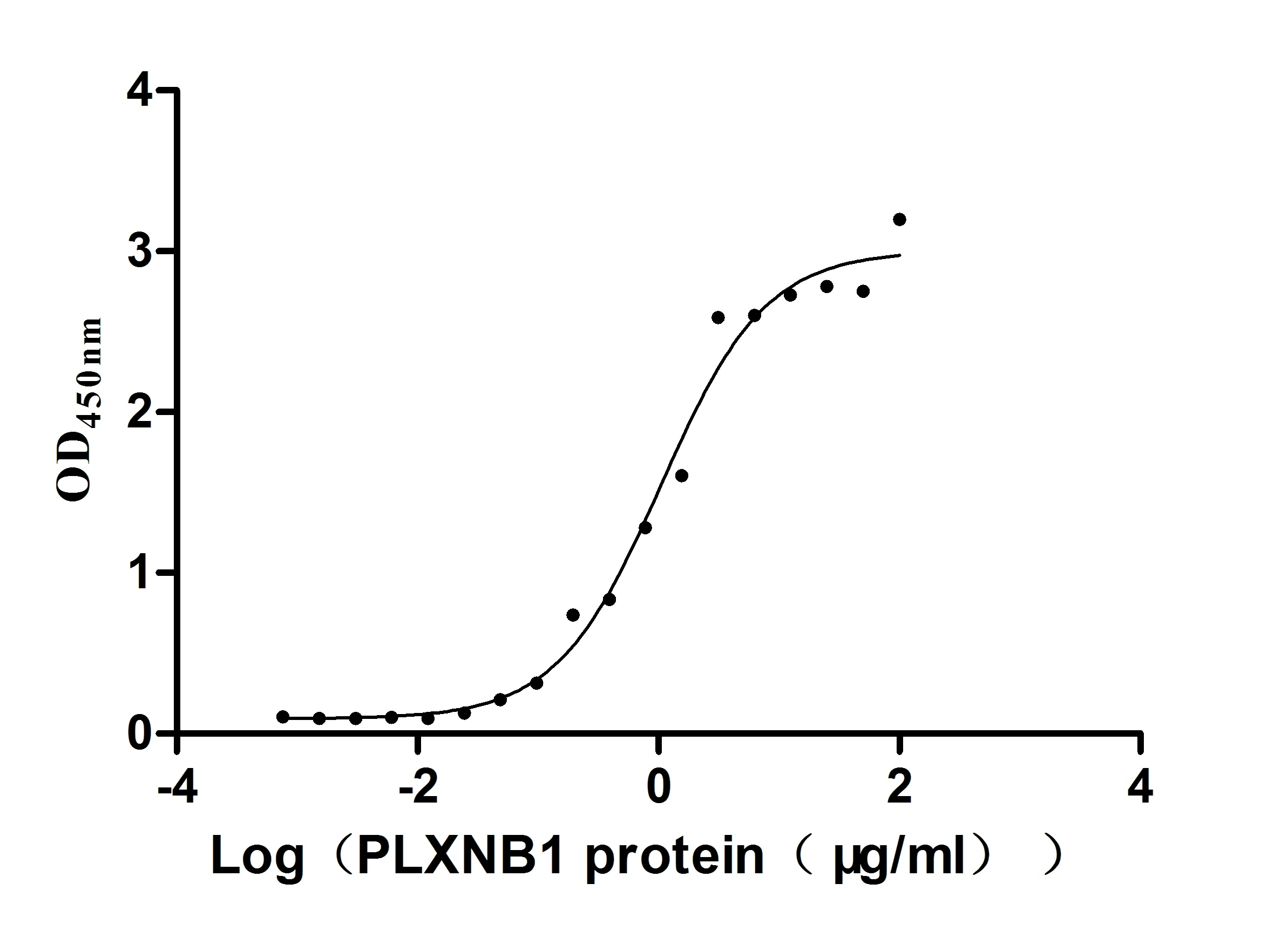
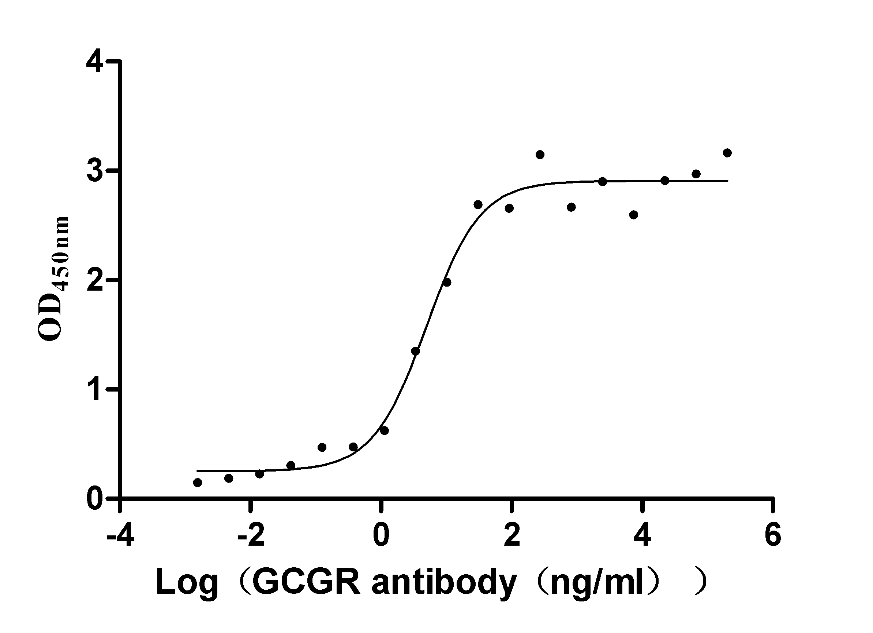
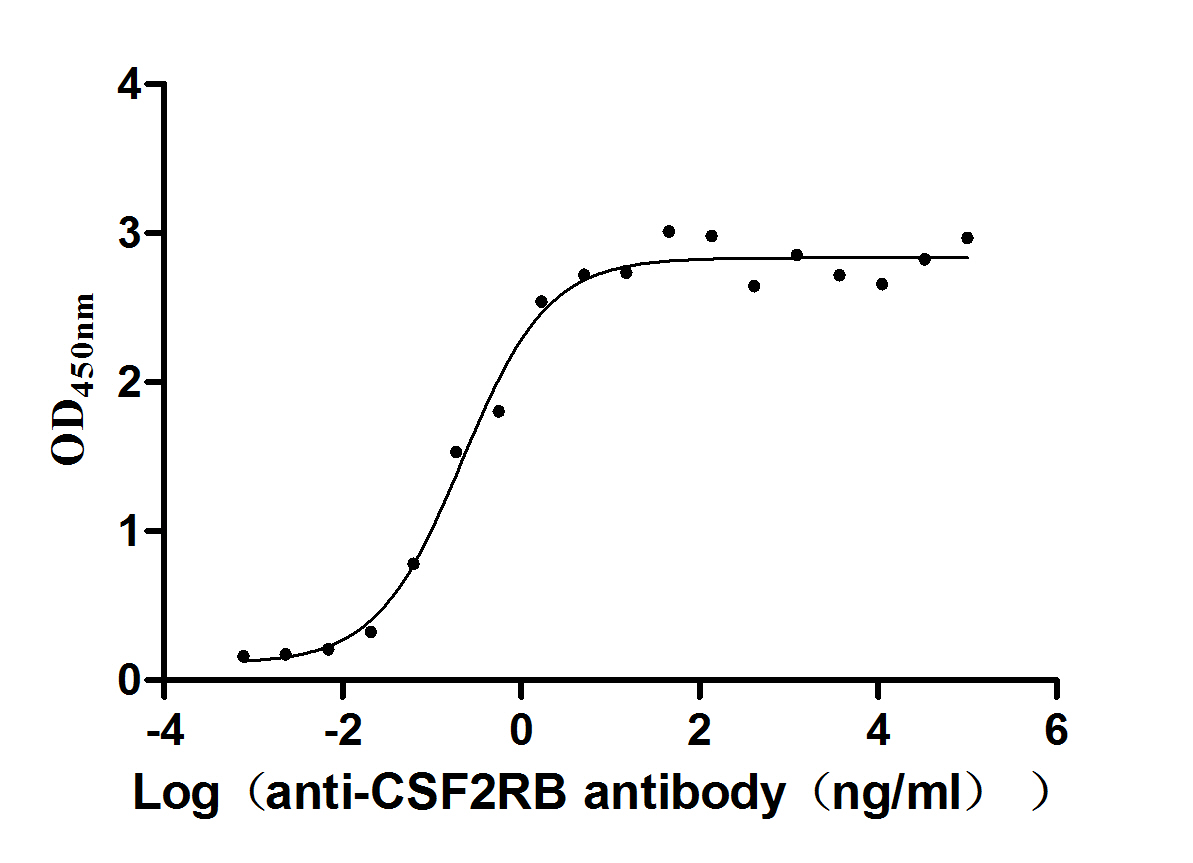
-AC1.jpg)
-AC1.jpg)
